After 5-6 hours of flying over the Pacific Ocean, you are rewarded with your first glimpse of Easter Island. Maps help give an idea of the distance between Easter Island and South America, but without setting foot there, it is hard to understand its true seclusion. As your plane touches down at Mataveri International Airport, and you walk across the tarmac to the small terminal, you begin to grasp how remote and special this place is. The near treeless landscape alludes to the island’s history of deforestation and allows for sweeping views dotted with moai (famous monolithic “Easter Island heads”, which are actually full bodies) in many directions. These views also hint at the ecological crises the island suffered in the past.
Easter Island is known by several names: Rapa Nui in the indigenous Rapa Nui language, Isla de Pascua in Spanish, and the English translation of Easter Island. It is said that the first inhabitants referred to it as Te Pito o Te Henua, or “The Navel of the World.” Hanga Roa, the capital and only true town on the entire island, is home to about 90% of the population. Outside of town, wild horses can be seen wandering about without a care. It is said there are more horses on the island than people. The pace of life is less hurried, similar to so-called “island time” throughout the rest of the world.
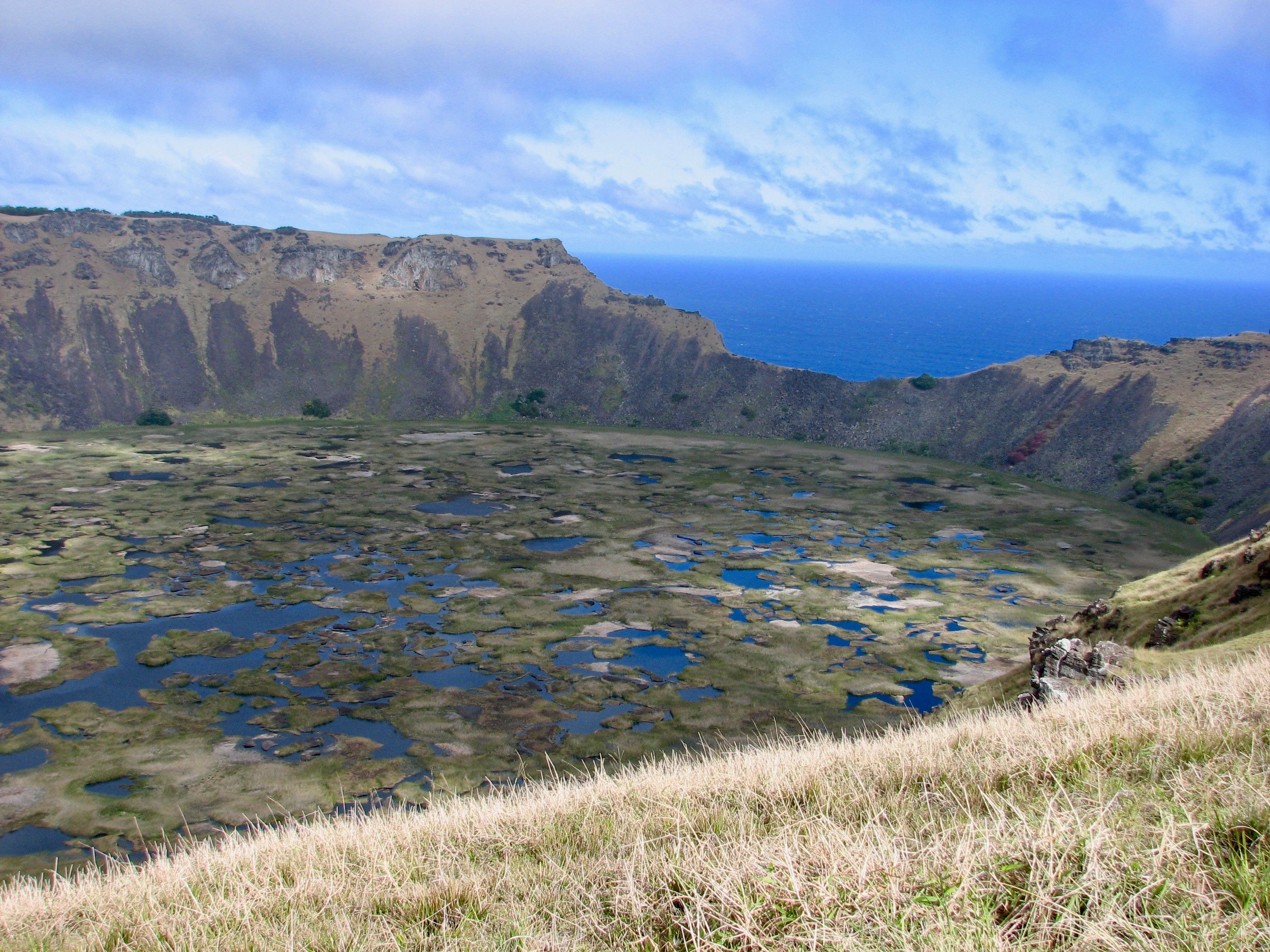 Rano Kau crater lake. Photo by Laura Hagler
Rano Kau crater lake. Photo by Laura Hagler
Due to the time it takes to reach Rapa Nui, 2-3 full days are recommended on-island to see the highlights without rushing. We often recommend travelers tag this visit on to one of our larger Chile Tours. Some of the top archeological and natural sites can be covered in a day on our Easter Island Tours. This may include sites like Anakena Beach’s ahu (meaning both the stone base for moai and a ceremonial site of several standing moai), the 15 moai of Ahu Tongariki, Orongo stone village, Papa Vaka petroglyphs, Rano Raraku the main moai quarry, and other spots of interest spread across the isle’s 63.2 square miles.
Your guide can provide an overview of Easter Island’s incredible history including the original (believed to be) Polynesian settlers, contact with European missionaries and explorers, depletion of natural resources, statue toppling, and more.
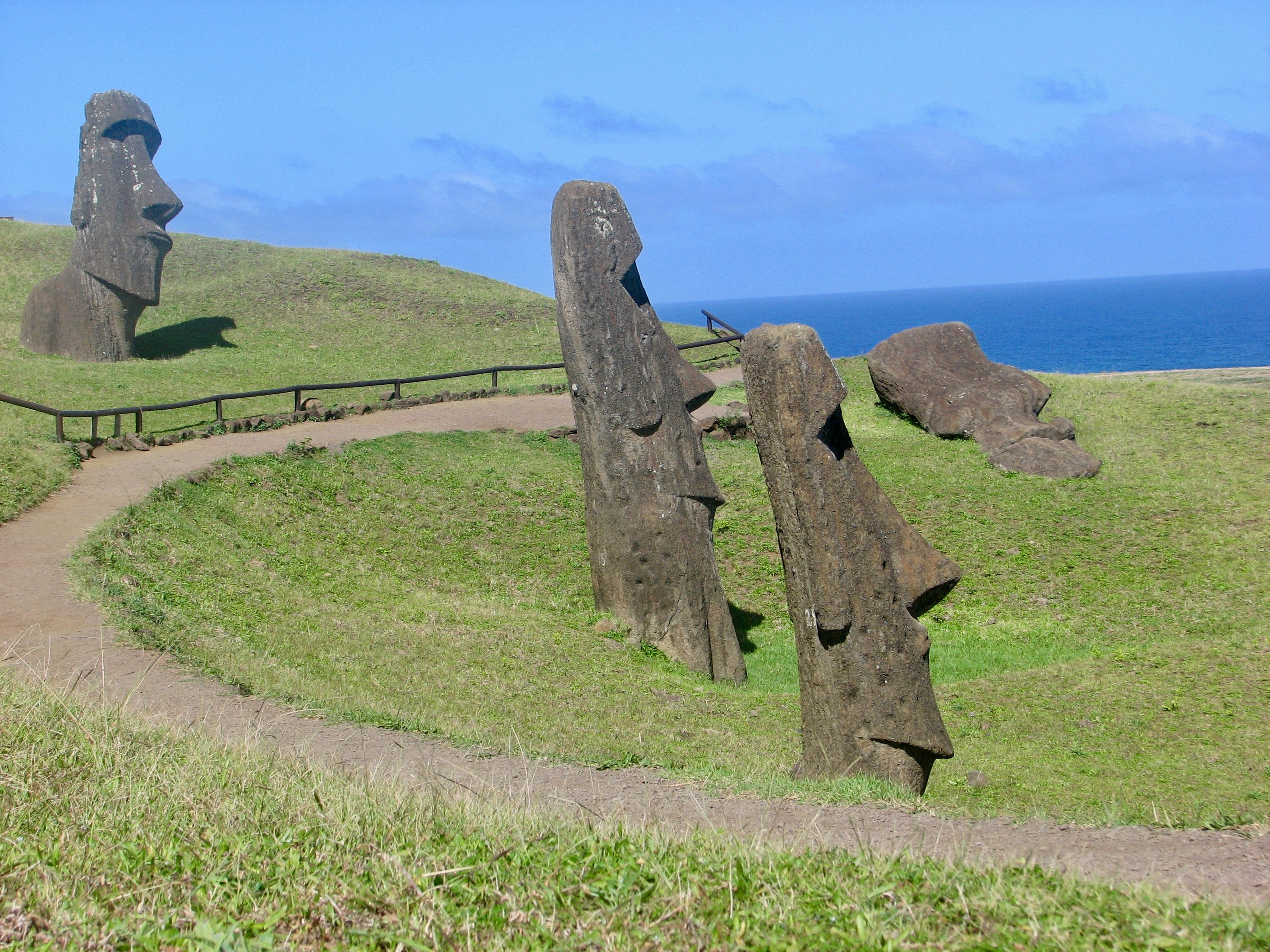 Rano Raraku moai quarry. Photo by Laura Hagler
Rano Raraku moai quarry. Photo by Laura Hagler
One particularly compelling legend is of the Birdman cult. The 1994 film, Rapa Nui, interprets this story. While not historically accurate, it provides a peek into a few periods of this ancient civilization. When visiting Rano Kau’s volcanic crater lake, you can see the nearby islands of Moto Nui and Moto Iti. The Birdman cult held an annual competition, as late as the 1850s, where male competitors (or an appointee of lower status) would climb down the cliff and swim the shark-infested waters to reach Moto Nui where they would hunt for the first sooty tern egg of the season. The victor would gain the right to distribute the season’s harvest among other ceremonial rewards and requirements.
Visitors can’t help but ponder the mystery of the moai and how they were transported to ahu along the coasts. These Easter Island statues have been studied for decades and have yet to give up their secrets. Speaking to visitors and locals, you may hear a variety of theories as to how the massive stone sculptures were moved from Rano Raraku to their current locations. The ahu and occasional lone moai are located near the ocean circling the island, however it is unknown why the moai only face inland.
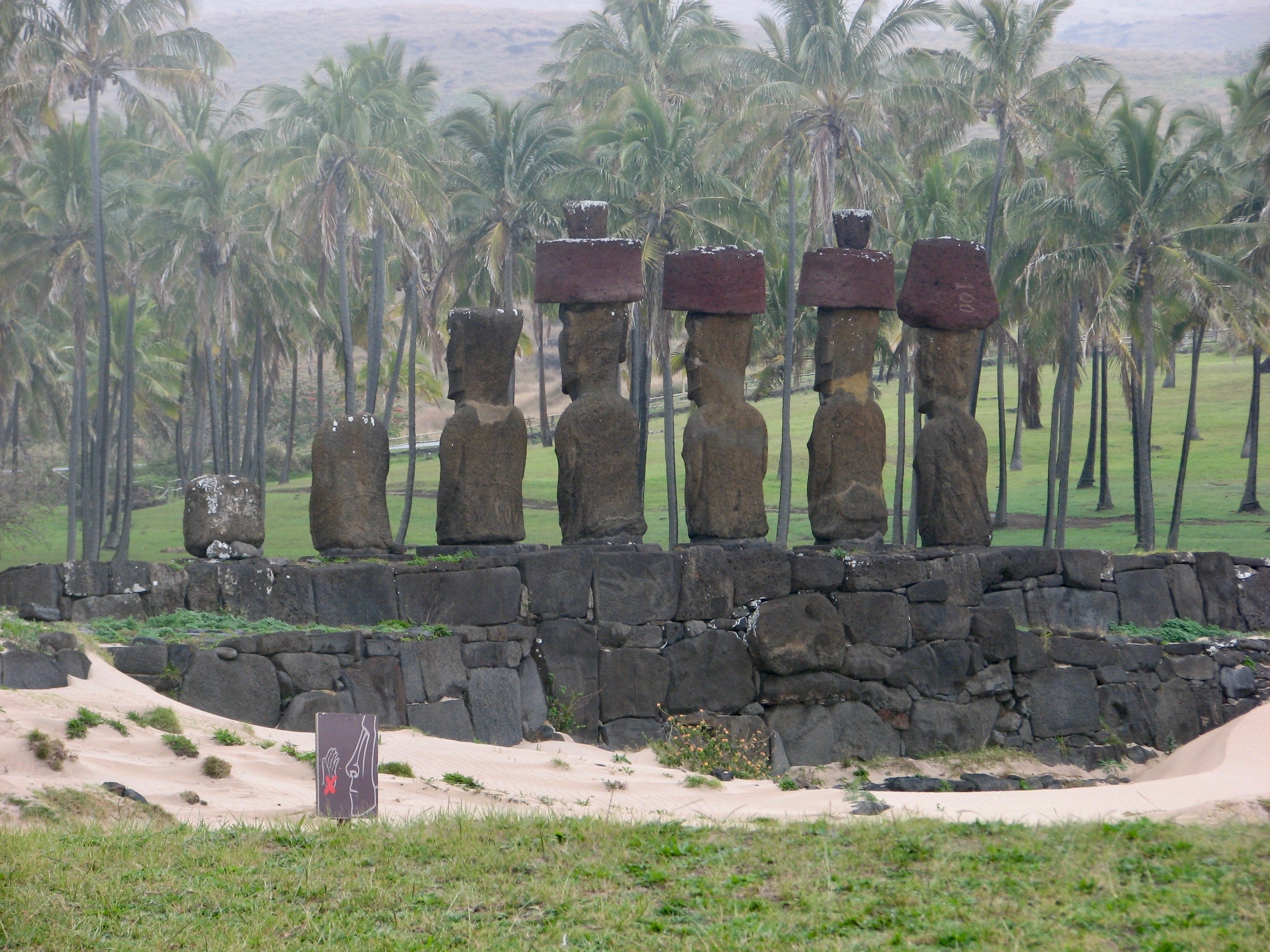 Backside of the moai as seen from the ocean. Photo by Laura Hagler
Backside of the moai as seen from the ocean. Photo by Laura Hagler
Rapa Nui offers recreational activities in addition to historical touring and stunning panoramas. These include, but are not limited to, scuba diving, surfing, trekking, and horseback riding. Sunrises and sunsets are a photographer's dream, but the view only improves as the sky darkens. With so little light pollution, the stargazing is unbelievable on clear nights.
Traditional crafts are available for purchase in Hanga Roa at the local market and individual stores and galleries. Wooden carvings of Moai Kava Kava (a human figure with protruding ribcage) and Rei Miro (a wooden crescent shape with heads on either end), which also adorns the Rapa Nui flag, are popular. Stone carvings of moai and Tangata Manu (Birdman deity) can also be found. We recommend you not purchase any items made of coral as its removal is not closely regulated.
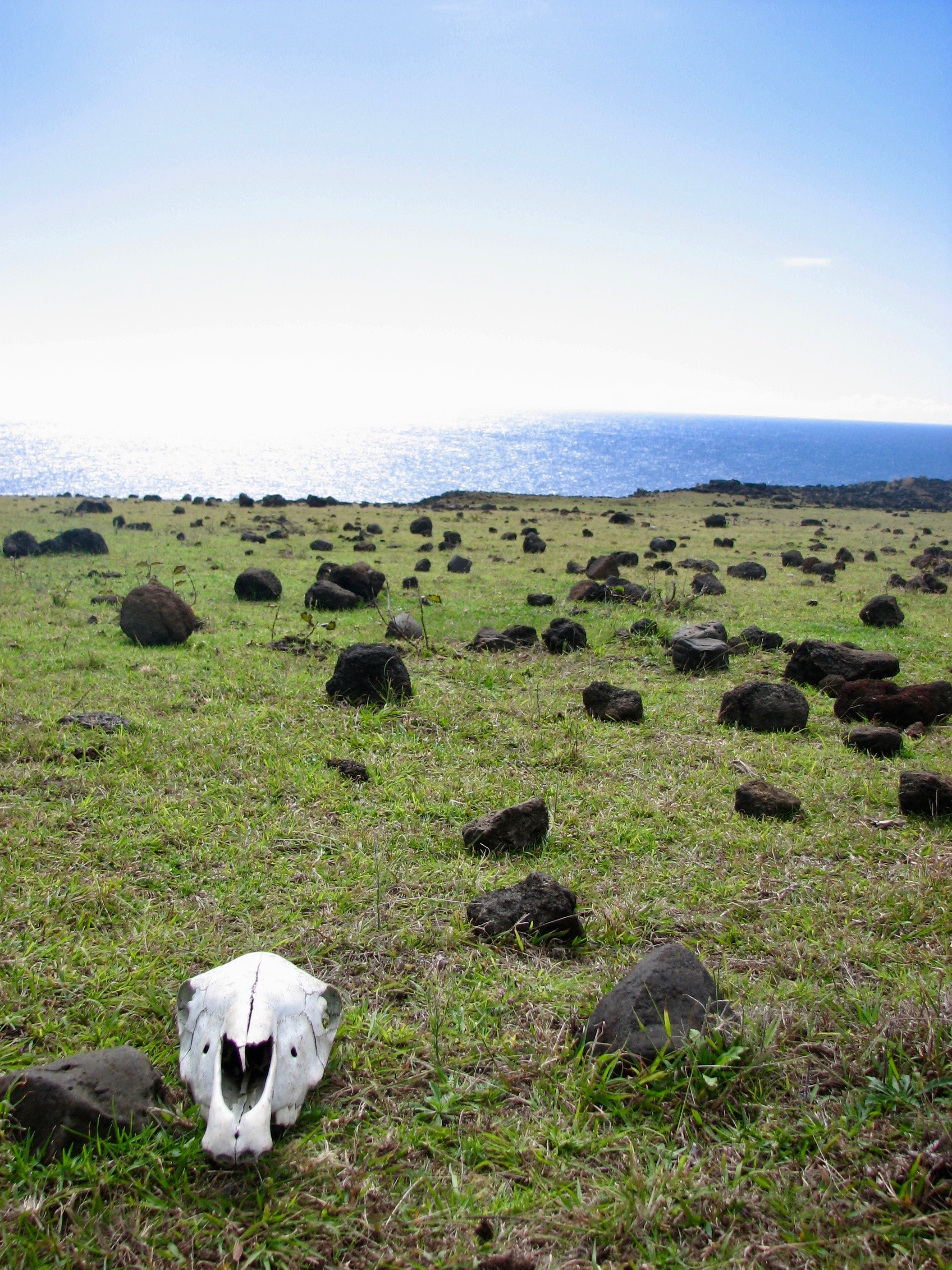 Lava rock strewn fields of the island’s west coast. Photo by Laura Hagler
Lava rock strewn fields of the island’s west coast. Photo by Laura Hagler
For the culinary-minded, the most traditional dish available is Umu Rapa Nui (Easter Island curanto) cooked in an earthen pit using hot stones and wood covered with plantain leaves. Locally grown root vegetables like taro and tapioca as well as meat and fish are layered, covered, and slowly cooked. You can enjoy curanto during the annual Tapati Festival, or other times of year at Te Ra'ai restaurant in Hanga Roa. Seafood options are plentiful and superb with mahi mahi, swordfish, lobster, and shrimp all fished just offshore. Po’e (a type of fruit bread/pudding typically made with plantain and arrowroot or other flour) can also be found in many restaurants as dessert or alongside the main dish.
Sustainability is a key element of Global Basecamp’s mission, and the accommodations and offerings we partner with share these values. They utilize solar power, include environmentally friendly construction, and offer tours to less frequented archeological sites and scenic parts of the island in an effort to avoid over-tourism as well as offer a unique opportunity to visit places off the beaten path.
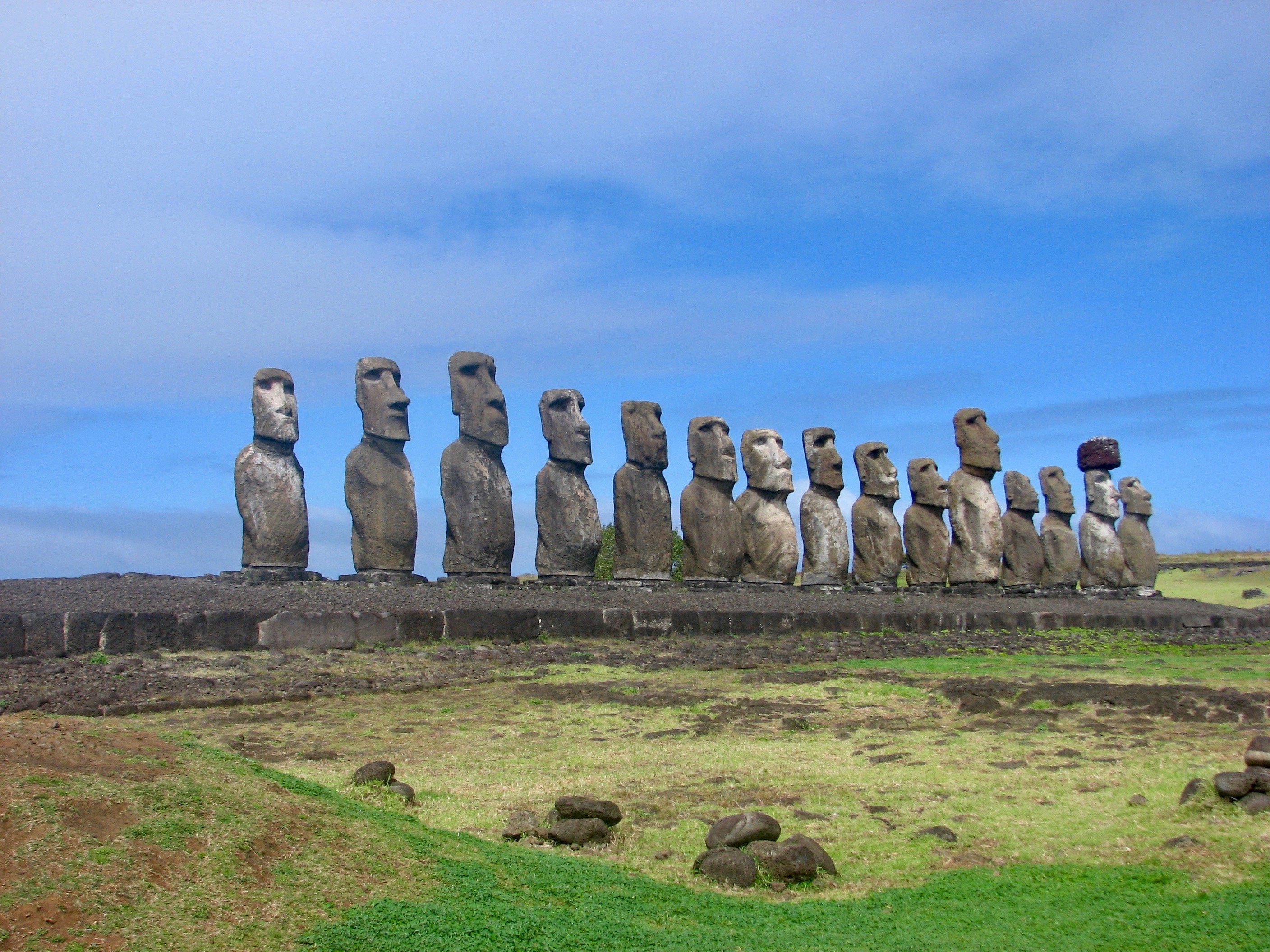 Closer view of Ahu Tongariki. Photo by Laura Hagler
Closer view of Ahu Tongariki. Photo by Laura Hagler
The effort it takes to reach this distant locale is rewarded with views of its unbelievable coastline and an insight into its mysterious and fascinating history. Local guides breathe life into the island’s past and are proud to share the natural wonders and cultural highlights of one of the most remote spots on earth.
If you’d like to learn more about our Chile and Easter Island Tours, please visit our website or contact one of our Travel Specialists today!














